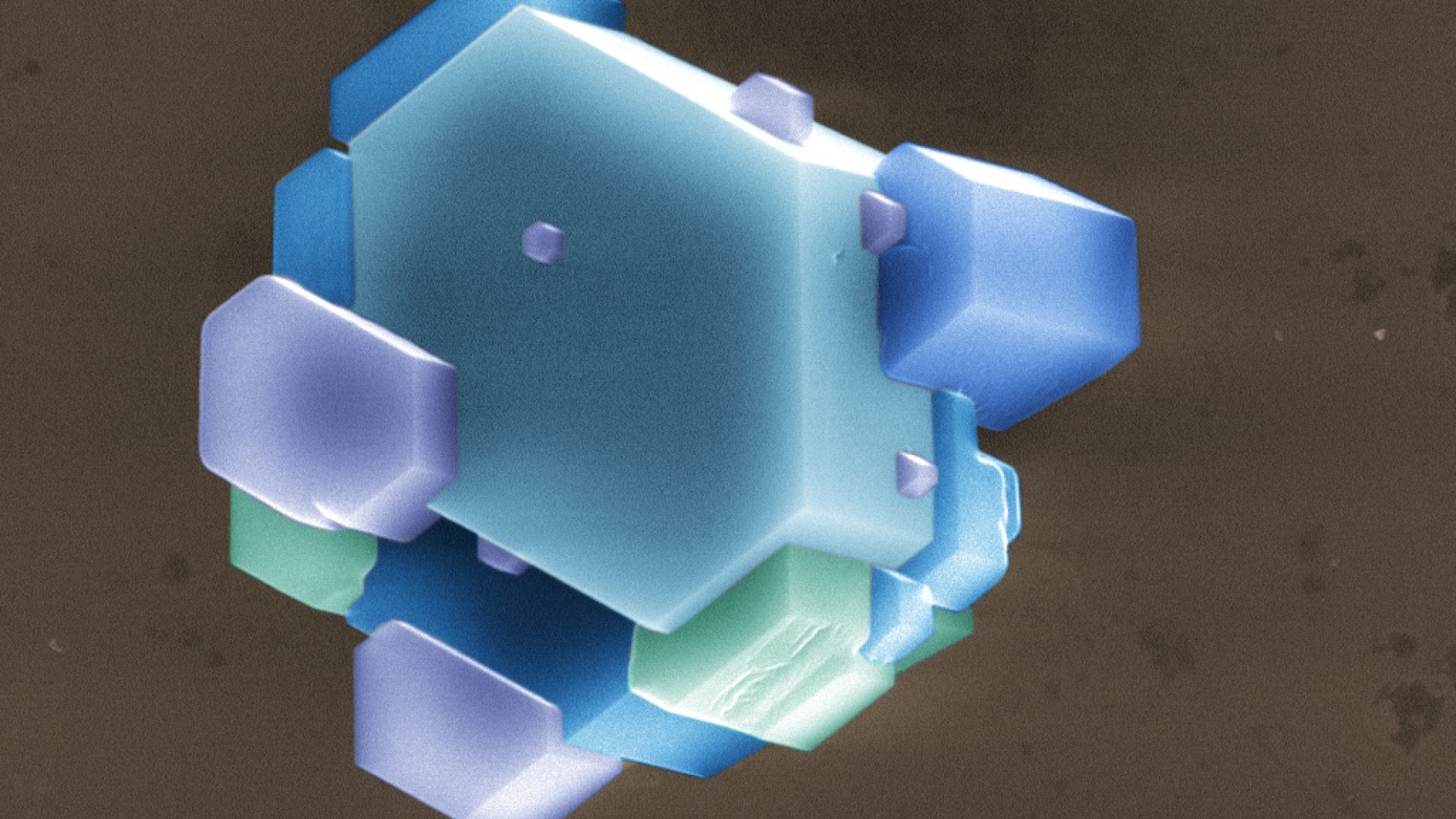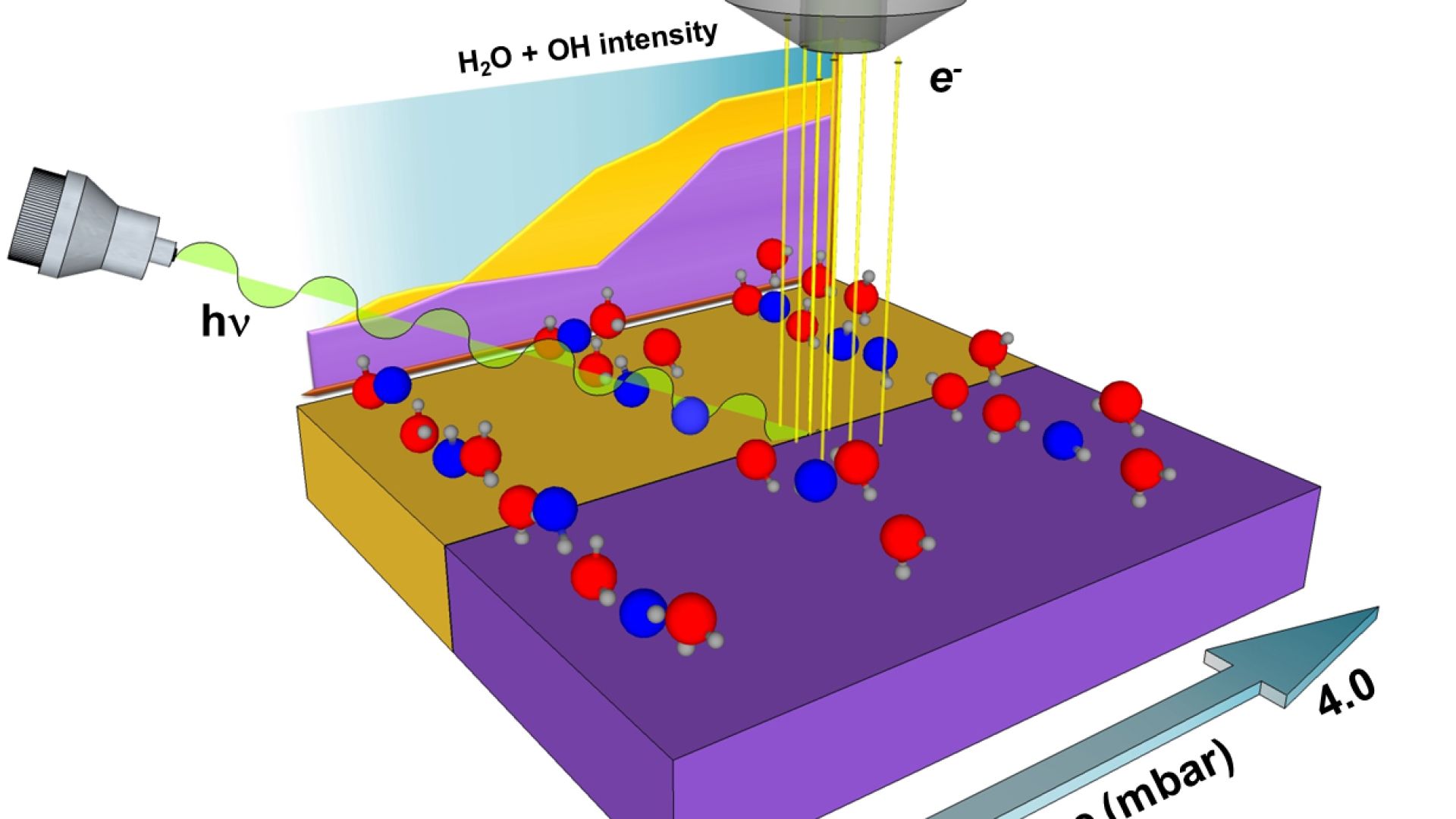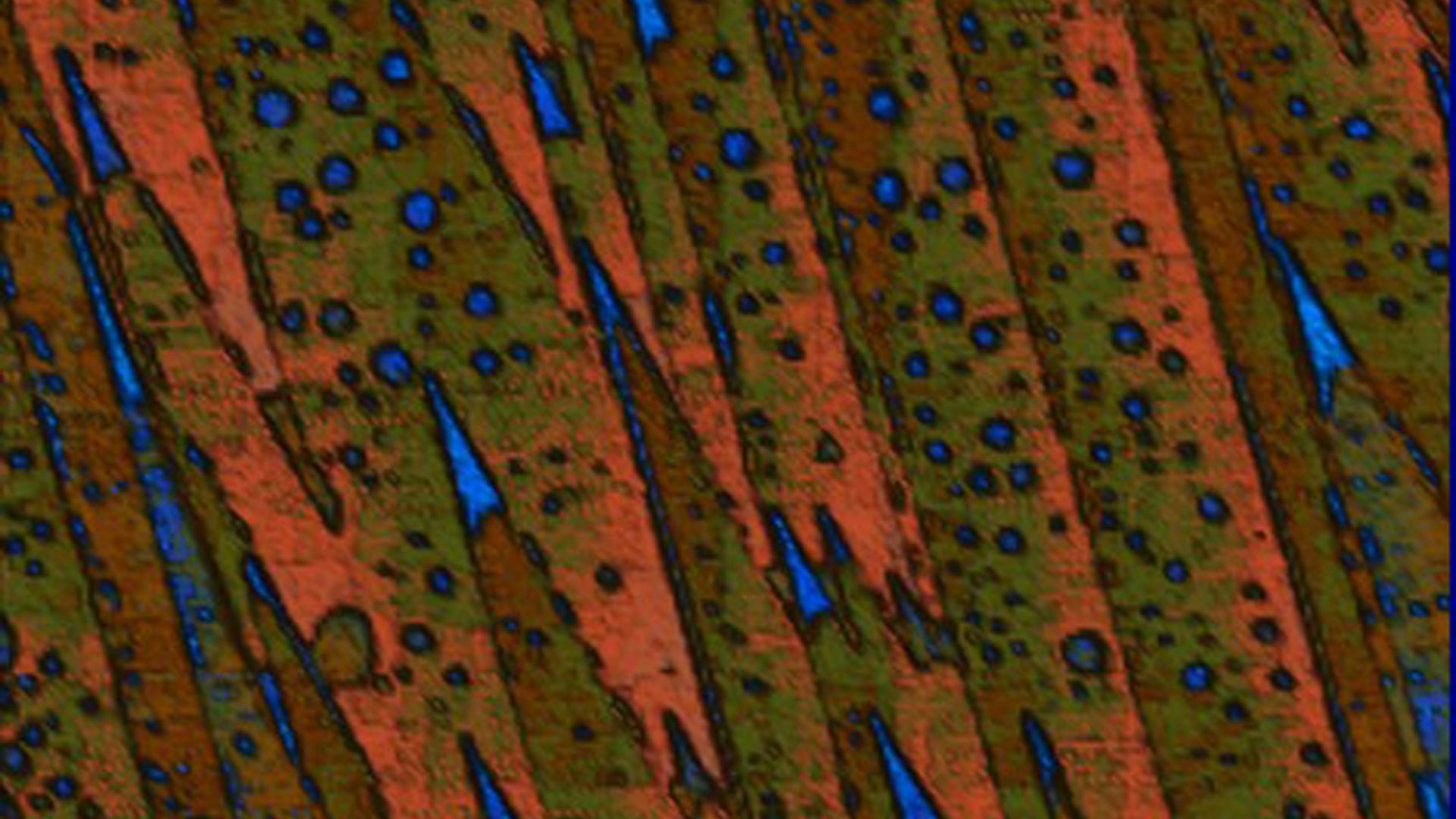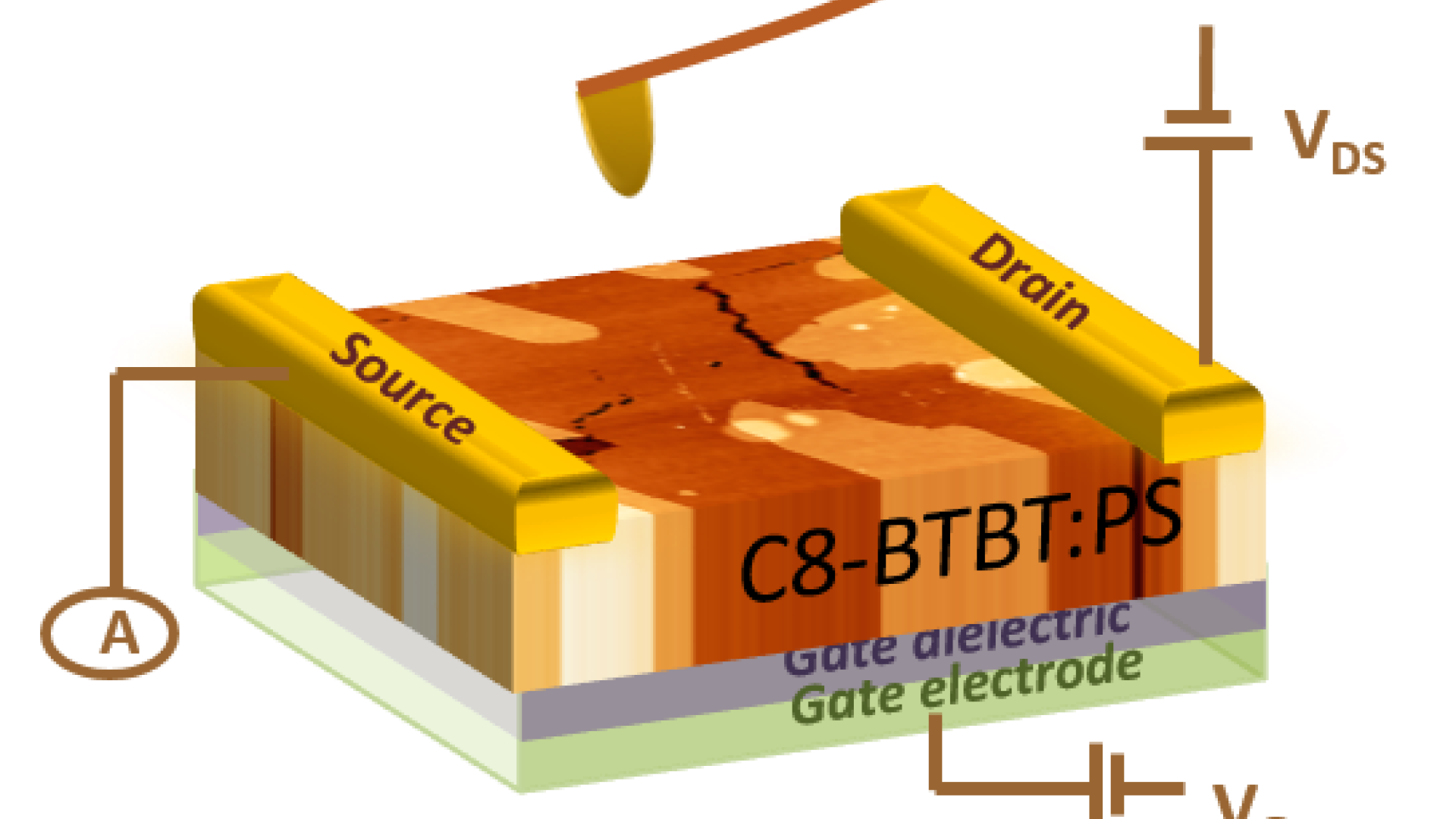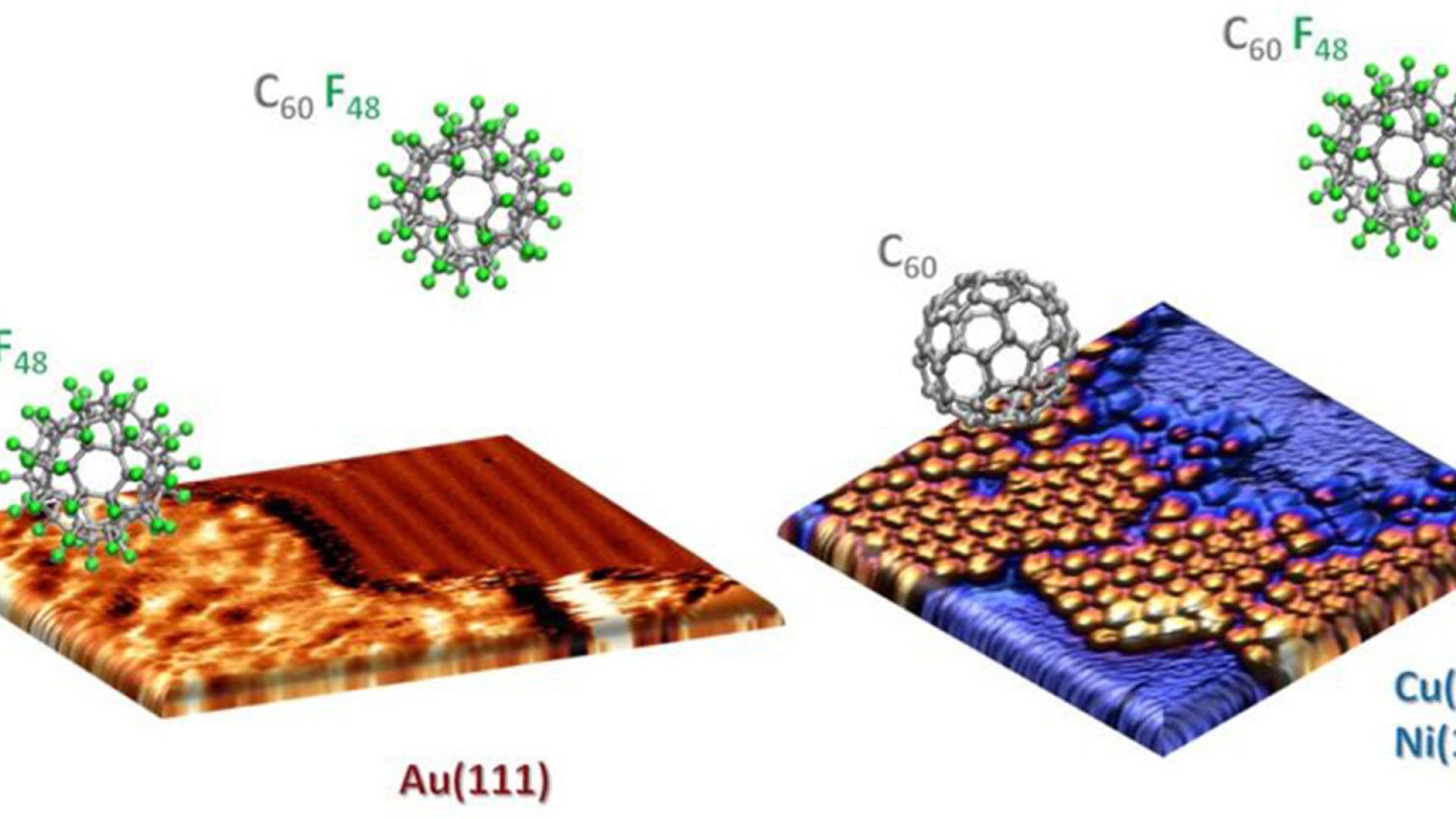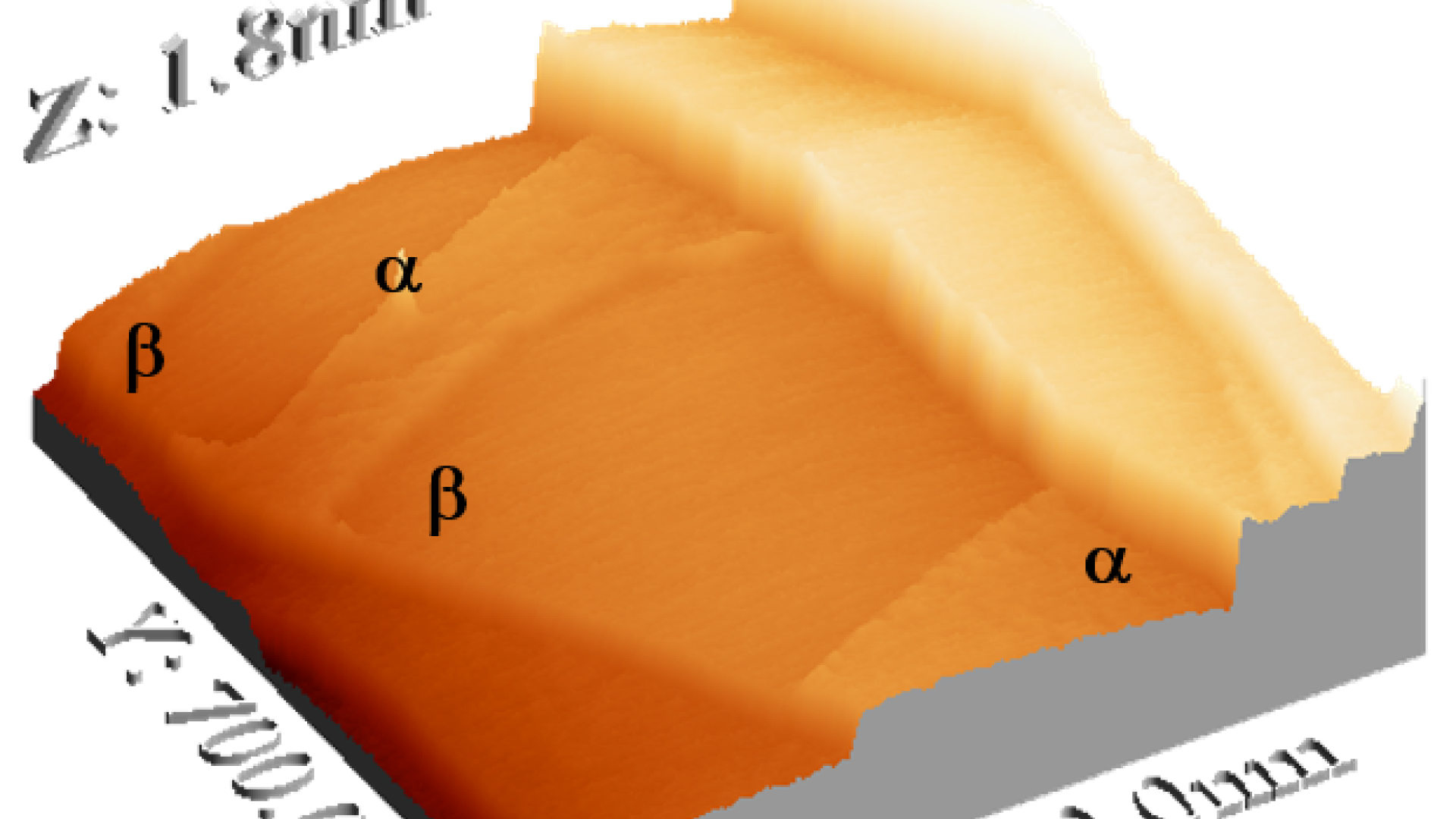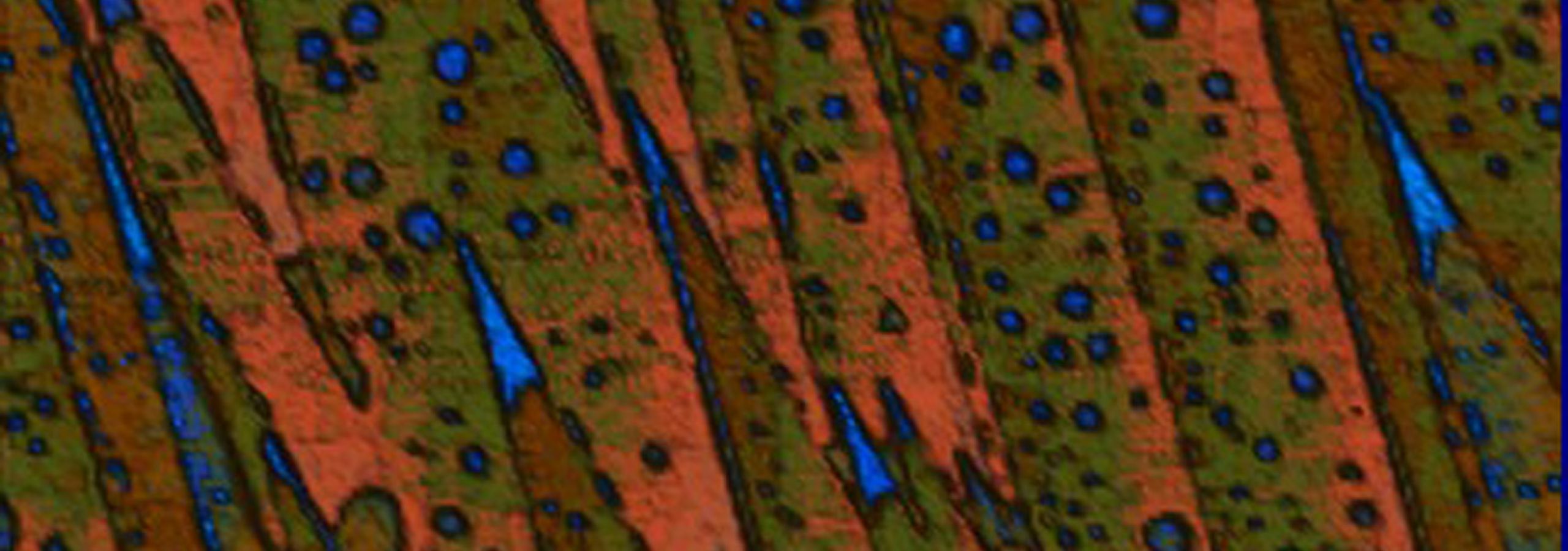
Development of new SPM modes based in multifrequency dynamic Atomic Force Microscopy (AFM) to study wetting, ice nucleation and identification of chemical groups at the nanoscale. (AV)
Water/solid interfaces are of fundamental interest in various fields including geology, metrology, biology, and chemistry. Despite its simple molecular structure the structure and interactions of water with surfaces, which determines wetting and reactivity remain unsolved. The knowledge of this structure at the nanoscale is crucial to understand key properties that determine corrosion, dissolution, and electrochemical processes. In this research line we use Scanning Probe (SPM) techniques to study water/solid interfaces at the nanoscale. One of the differences of SPM from other techniques is the locality of the information. SPM uses a probe tip to scan over the surface, and obtain structural information together with, e.g., electronic, mechanical, and vibrational properties. Because it is not an averaged information over a wide area, as in the case of all the other techniques listed above, detailed investigations of how atomic steps, kinks, and defects residing on the surface influence on the adsorption of molecules are possible. However using SPM to study water/solid interfaces is not a straightforward technique because of the perturbations that the SPM probe can cause on the water films during measurements. Non-contact SPM techniques to avoid direct interaction between the SPM probe and water have been developed in the group. Those techniques are being used now to go a step forward and try to create new SPM modes that could allow to identify at the nanoscale between different organic chemical groups.
Selected Recent Publications
Shimizu,; Maier, S; Verdaguer, A; Velasco-Velez, JJ; Salmeron, M.
Progress Surf. Sci. 93, 87-107, 2018. DOI: 10.1016/j.progsurf.2018.09.004
“Imaging Water Thin Films in Ambient Conditions Using Atomic Force Microscopy”
Santos, S; Verdaguer, A.
Materials 9, 182, 2016. DOI: 10.3390/ma9030182
“A nanoscopic approach to studying evolution in graphene wettability”
Lai, CY; Tang, TC; Amadei, CA; Marsden, AJ; Verdaguer, A; Wilson, N; Chiesa, M.
Carbon 80, 784-792, 2016. DOI: 10.1016/j.carbon.2014.09.034
“Minimal Invasiveness and Spectroscopy-Like Footprints for the Characterization of Heterogeneous Nanoscale Wetting in Ambient Conditions”
Amadei, CA; Santos, S; Pehkonen, SO; Verdaguer, A; Chiesa, M.
Phys. Chem. C, 117, 20819-20825, 2013 DOI: 10.1021/jp408984h
“Measuring the true height of water films on surfaces”
Santos, S; Verdaguer, A; Souier, ; Thomson, NH ; Chiesa, M.
Nanotechnology 22, 465705, 2011 DOI: 10.1088/0957-4484/22/46/465705
Research Lines

